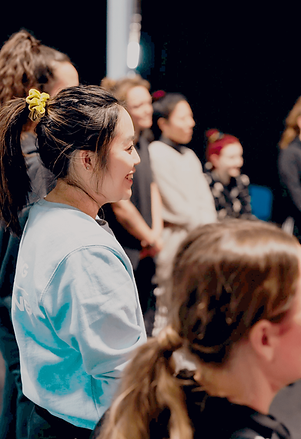Unlocking Aerial Inversions: Exercises to Enhance your performance
- Beth Shum
- Jun 17
- 2 min read

Aerial inversion is one of the most exciting yet technically demanding skills in the world of aerial arts. While many performers are eager to flip upside-down with grace and control, it’s common to see inversions done with compensatory movements that may lead to injury. If you're training for clean, injury-free aerial inversion, shoulder conditioning should be your priority.
In this guide, we break down essential aerial inversion exercises and drills that will help you build strength, control, and proper form—whether you’re working on a hoop, silks, or from the floor.
Why Conditioning for Aerial Inversions Matters
When attempting an inversion, many beginners throw their heads back, collapse their shoulders, or overextend their backs. These compensatory habits are not only inefficient—they can lead to strain or injury over time.
That’s why shoulder engagement drills and core-focused inversion training are crucial to safely progressing your aerial practice.
Drill 1: Shoulder Engagement on the Bar
Start by holding onto the bar. This drill focuses on shoulder compression and scapular control:
Easier Version: Keep your feet on the ground.
Harder Version: Lift your knees to your chest or raise your legs off the floor.
👉 Tip: Think of wrapping your shoulder blades down and lifting your chest slightly. Move slowly to improve neuromuscular control and build awareness of shoulder positioning.
Drill 2: Band-Assisted Inversions
Using a resistance band looped over the bar, you can practice aerial inversions with reduced load:
The band lightens your leg, making the lift easier while keeping form intact.
You can adjust the resistance of the band for different levels of support.
Focus on replicating your full inversion grip with proper shoulder alignment.
This drill is perfect for bridging the gap between floor practice and full inversions in the air.
Drill 3: Weighted Pulls for Shoulder Mobility
With a weight behind you:
Bend your knees and engage your core.
Pull the weight through your body, emphasizing shoulder movement through a full range of motion.
This movement encourages deeper shoulder strength and control, both essential for safe aerial inversion training.
Drill 4: Floor-Based Inversion Practice
No equipment? No problem.
Try floor exercises for aerial skills by lying on your back and using a stick or band held overhead. This simulates the tension you'd feel on the bar:
Beginner Option: Start with bent knees.
Advanced Option: Use straight legs and control the motion with your core.
These drills allow you to focus on form and alignment without the pressure of gravity or body weight.
Bonus Tip: Work on Your Pelvic Tilt
Understanding anterior and posterior pelvic tilt is key. Proper core engagement ensures you’re lifting from your center, rather than swinging your hips or overcompensating with your back.
Progressing in aerial inversion takes time, patience, and smart conditioning. These drills offer a safe and structured way to develop strength and control for a cleaner, more effortless inversion. Whether you're training in-studio or at home, incorporating these aerial inversion conditioning exercises into your routine will help you invert with confidence and reduce injury risk.
Contact us for those who wants 1:! Flexibility sessions or follow us on Instagram @flexibility_matters




.png)





Comments